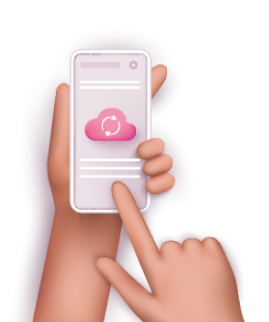This article originally appeared in Telecomlead
Who’s going to make the first move? That’s the ultimate difference between reactive and proactive care for Internet Service Providers (ISP). With reactive care, you show the customer that you can act quickly in case of a problem, and with proactive care, you act ahead of time so that the problems never materialize in the subscribers’ homes to begin with. Perhaps unsurprisingly, a combination of the two is needed in today’s saturated market.
With Internet Taking Utility Status, You’re Competing on Service
Today, customers expect internet access like they expect a running faucet. Just like lights, heat and water, Wi-Fi has become a utility that homes can’t do without. As an ISP, your offering is likely to be exactly the same as the competition—after all, there’s no 5-star rating to have the lights turn on overhead. Instead, you’re competing on variables outside of the product itself, namely your performance and support.
Customer care is split into two categories: proactive and reactive. While reactive care only serves those who pick up the phone and get in touch, proactive care also serves the silent majority who decide not to call. This cohort is critical, as it’s these subscribers who never tell you that they are unhappy; they simply leave. This phenomenon is growing, known as silent churn. To serve this category of subscribers, you need proactive care backed by data and analytics so that you have the ability to find those who need help but won’t pick up the phone.
As we don’t live in an ideal world, and there are factors outside of your control as an ISP, from the last mile delivery and the WAN to the customer’s own devices or third-party servers, you’ll also need reactive support, the ability to quickly and easily diagnose a problem when a customer reports an issue.
Bringing Reactive and Proactive Together
With the competition nipping at your heels, if either reactive or proactive support dips, you’re in trouble as an ISP. The impact of sub-optimal reactive support is a tale as old as time. If you can’t quickly resolve issues for your customers, they are going to find a service provider who can. Successful reactive support means empowering your Level 1 and 2 technical support representatives with the visibility to see what’s wrong and mitigations that can be put into action at the moment.
At the same time, when there is quiet, it’s your role as an ISP to act proactively. Silent churn is a growing epidemic in communications, and regular poor experiences with a lack of availability, buffering, jitter or other performance issues will have them ready to move on. Recent studies have shown how essential data gathering and data analysis are in combating what is also known as “rotative churn,” where there has been no discussion between the customer and company before the decision to leave was made.
Proactive care gives you the chance to find suffering homes and to make a difference before it’s too late. By monitoring the Quality of Experience even when customers are not calling, you can act ahead of time to find the ticking time bombs. These could be anywhere on the service delivery chain, both inside and outside the home. Proactive care requires wide visibility and control.
If there’s an issue with fiber in a specific region, you can send a technician to repair the problem before customers complain. If a specific brand or firmware version on a router is causing performance issues, TSPs can proactively SMS or notify subscribers with a fix. The list goes on.
The Power of Context
The common factor in both reactive and proactive support, the one that both delights the end user and strengthens the business, is context.
An SMS from your ISP that lets you know streaming is being negatively impacted means nothing if this household doesn’t even have a Netflix subscription. When a subscriber calls with challenges working from home, you don’t want to waste their time (or your own) troubleshooting options for improving performance for gamers. What matters on mobile is different from a smart TV, and what’s essential to a new subscriber in their first two weeks is not the same as the needs of someone who has been with your service for 5+ years.
Today’s ISPs should be looking for ways to segment users into groups based on behavior, demographic, location, devices and more. If you can accurately get this information, you’re two steps ahead before you even start offering customer care. Your support teams have the contextual answers to feel confident they are reacting accurately in the customer’s time of need, and your business has the insight to know how to implement proactive care where it will have the greatest impact.





